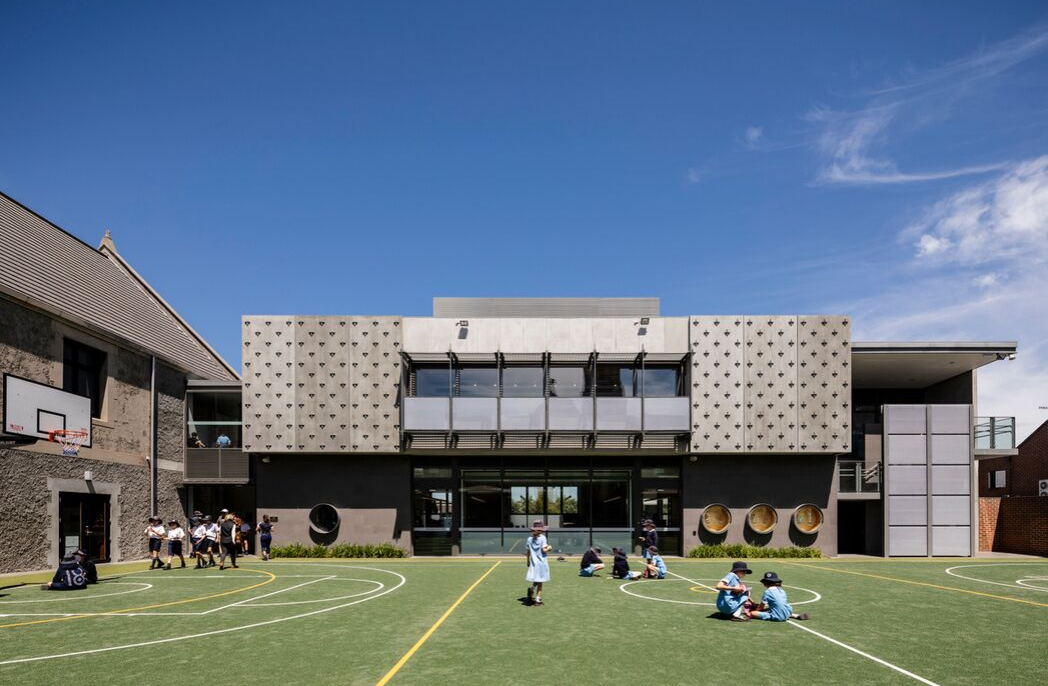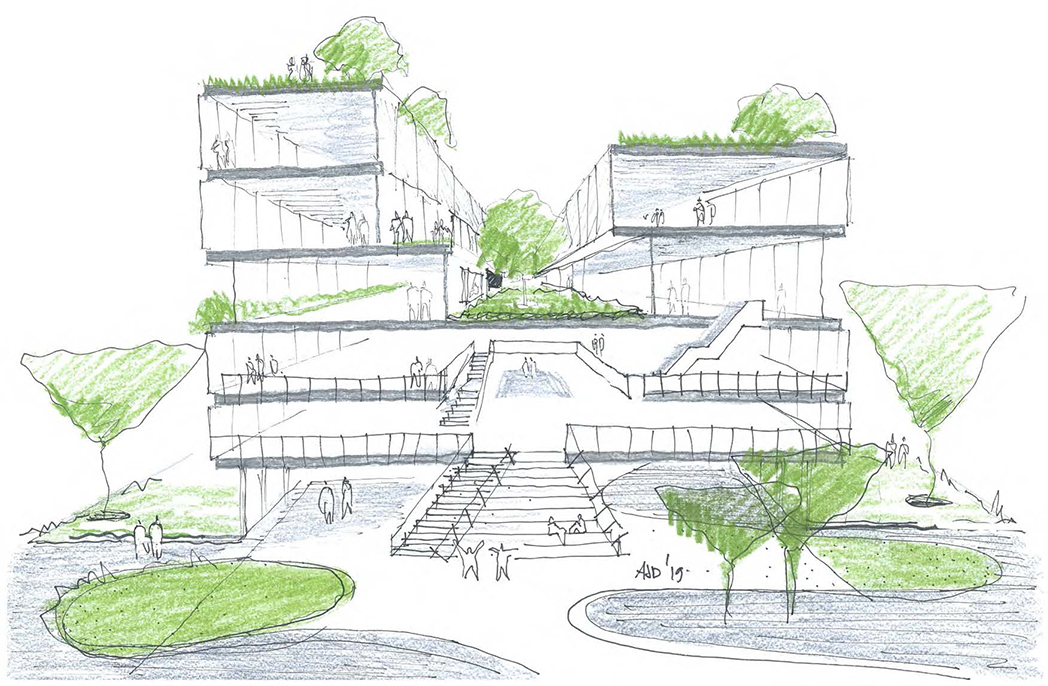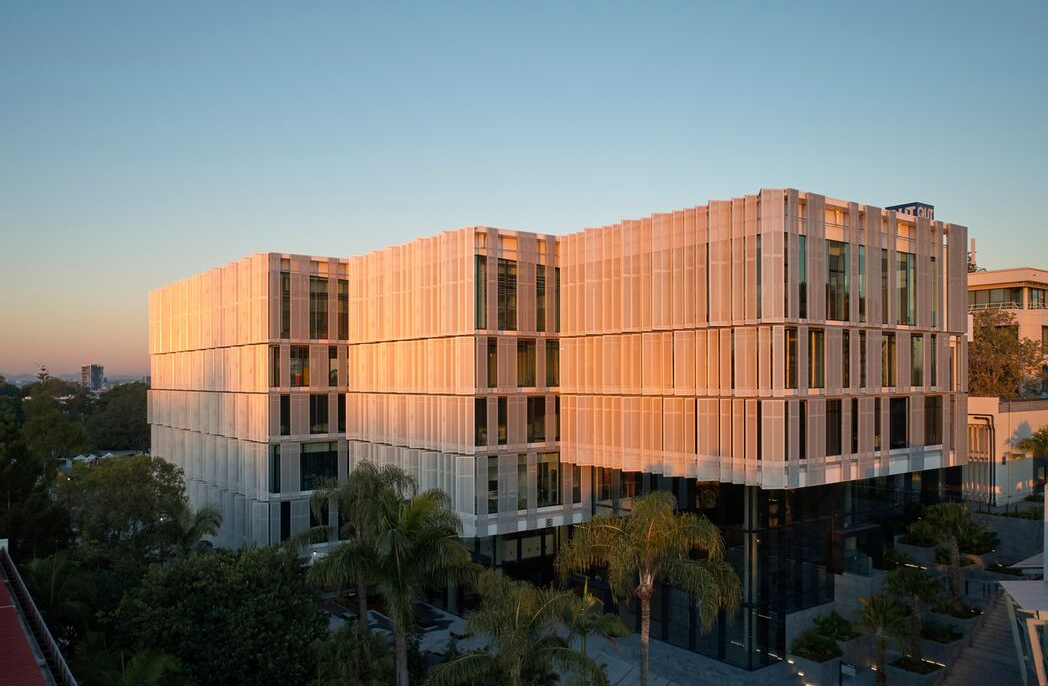
Designing on a sensitive site: Oxford University’s Beecroft Building
Designing on a sensitive site: Oxford University’s Beecroft Building
Share
The design for theoretical and experimental physics research at University of Oxford achieved planning consent on one of the most sensitive sites in Oxford. Designed by Hawkins\Brown, the university’s vision was for a collaborative working environment that would sit alongside cutting edge laboratories.
Architect’s statement
The site allotted for the new building presented a number of challenging constraints for the designers. At the junction of Parks Road and Keble Road in the northeast of Oxford City Centre, the prominent location sits in close proximity to several listed buildings, notably the grade I listed neo-gothic buildings of Keble College, designed in the 1870s by William Butterfield.
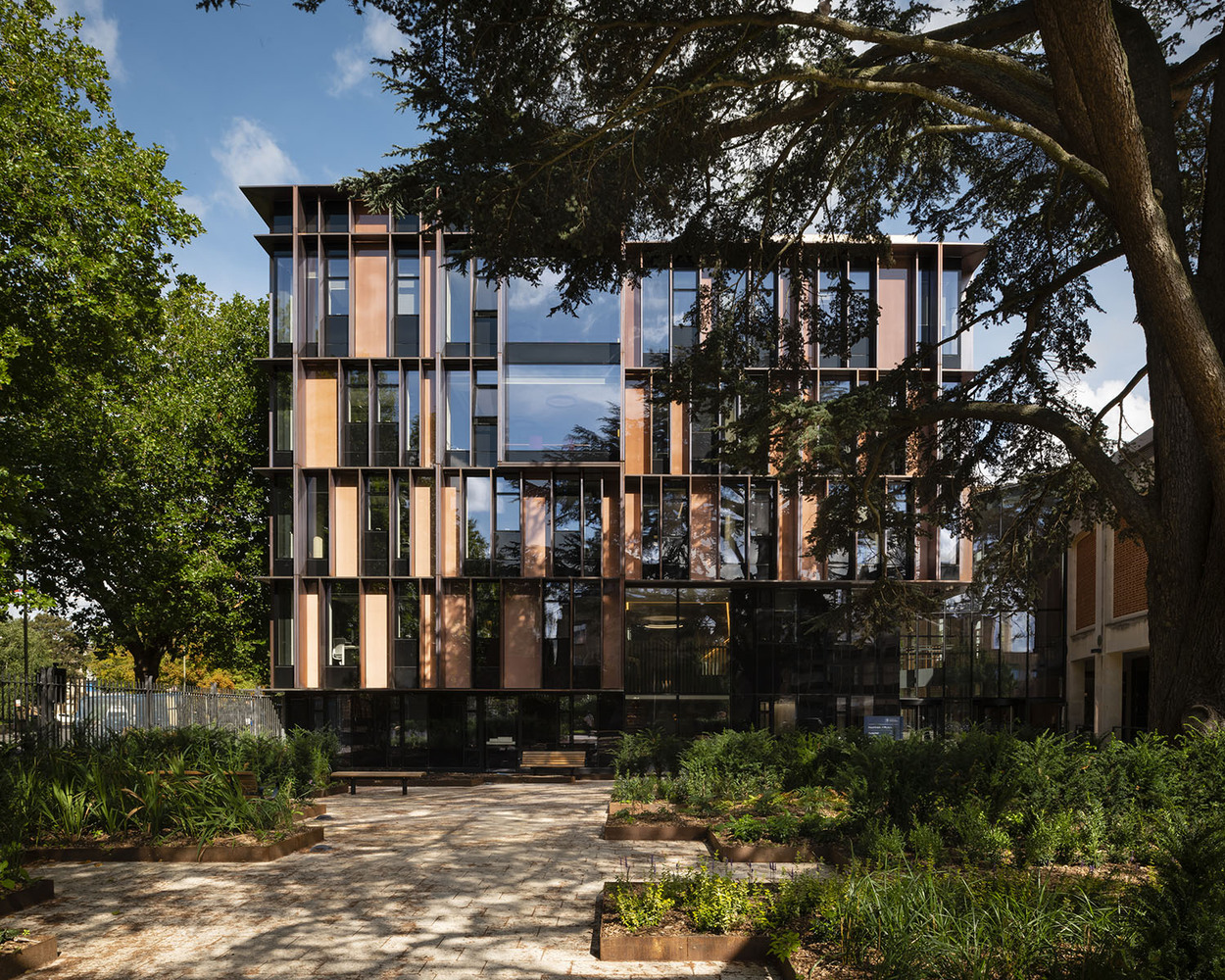
A protected cedar tree sits adjacent to the main entrance and the site is also enclosed by Oxford’s Central City Conservation Area on two sides. The building enjoys expansive views across the University Parks to the north and its massing has been arranged to respond to the varied local context, which contains a range of scales and settings.
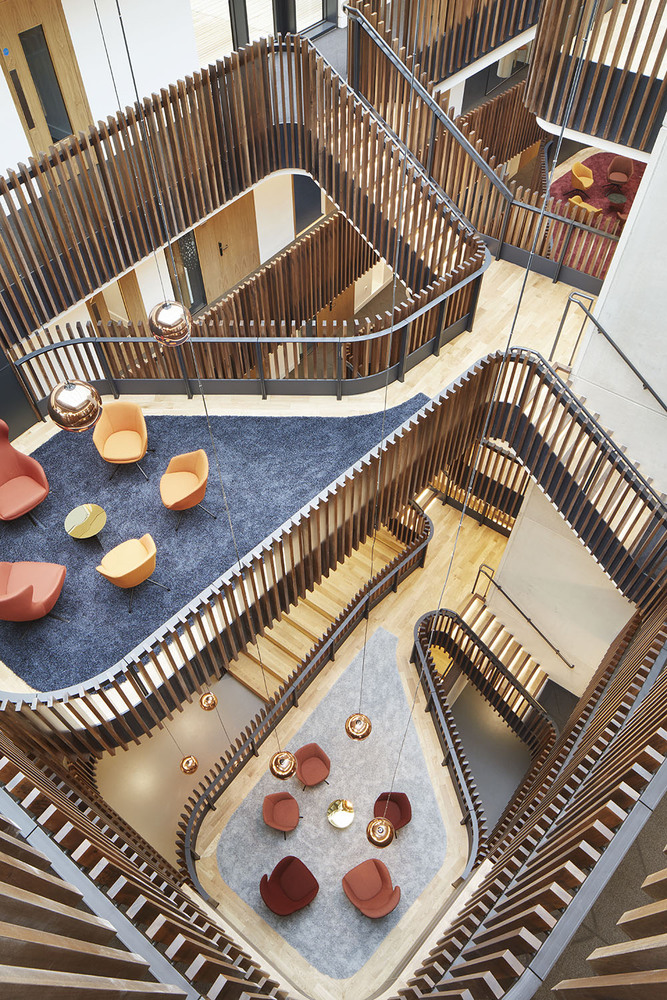
The building is clad in a combination of bronze, glass and expanded copper mesh insert panels with a grid of naturally weathering bronze fins. The rhythm, vertical emphasis and colour respond to the upright gothic style of Keble College. Large picture windows frame views into and out of the internal collaboration spaces, creating visual connections between activities within the building and its context.
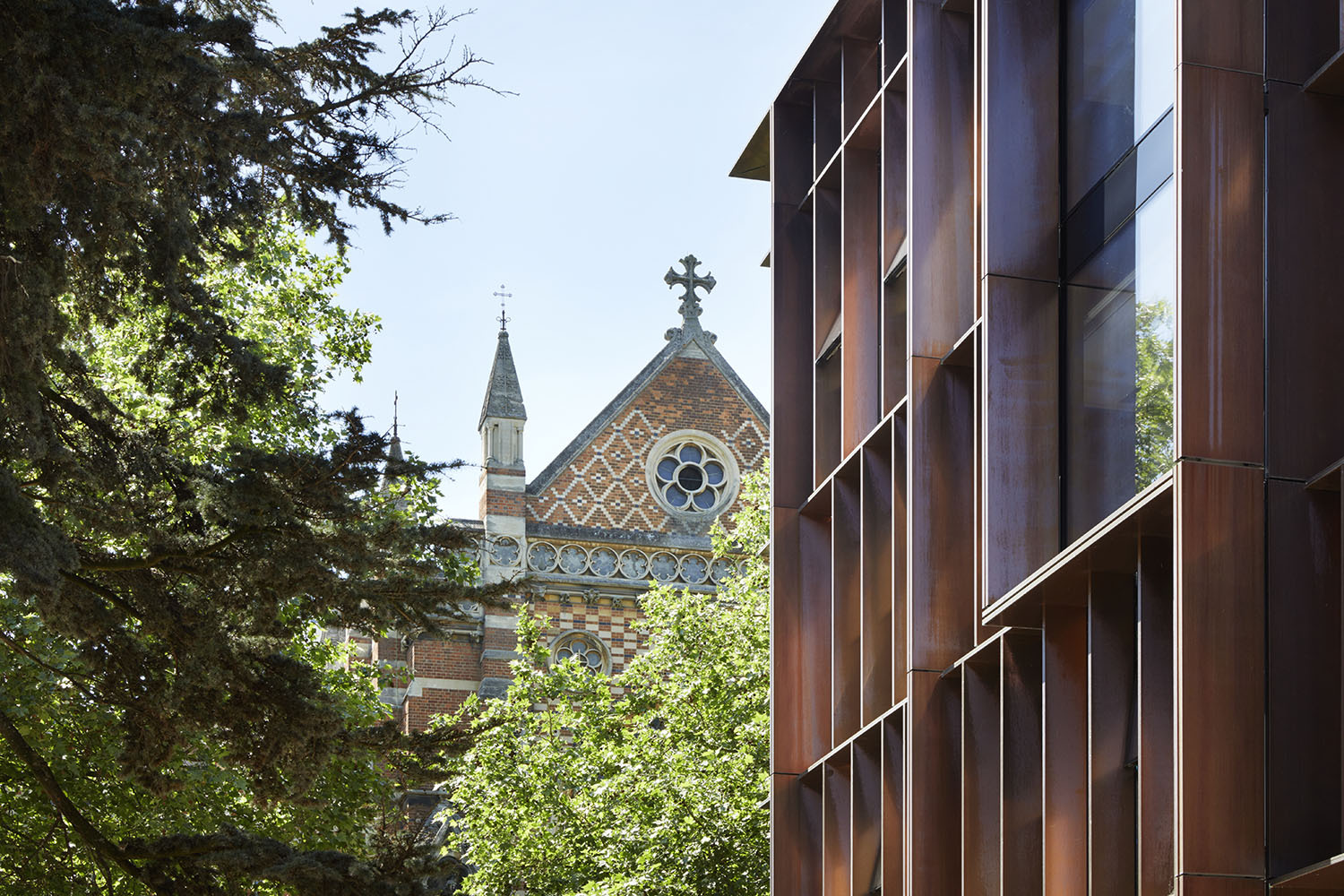
Buildings in central Oxford are restricted by the city’s “Carfax Height” policy, which limits new buildings within 1.2km of Carfax Tower in the centre of Oxford to 18m in height. In order to fit the full complement of accommodation required by the university onto the site, including an extensive amount of services and plant to achieve extremely stable and tightly controlled laboratory environments, the development of a 16 metre-deep basement was necessary. This houses two floors of facilities that meet the highest global standards.
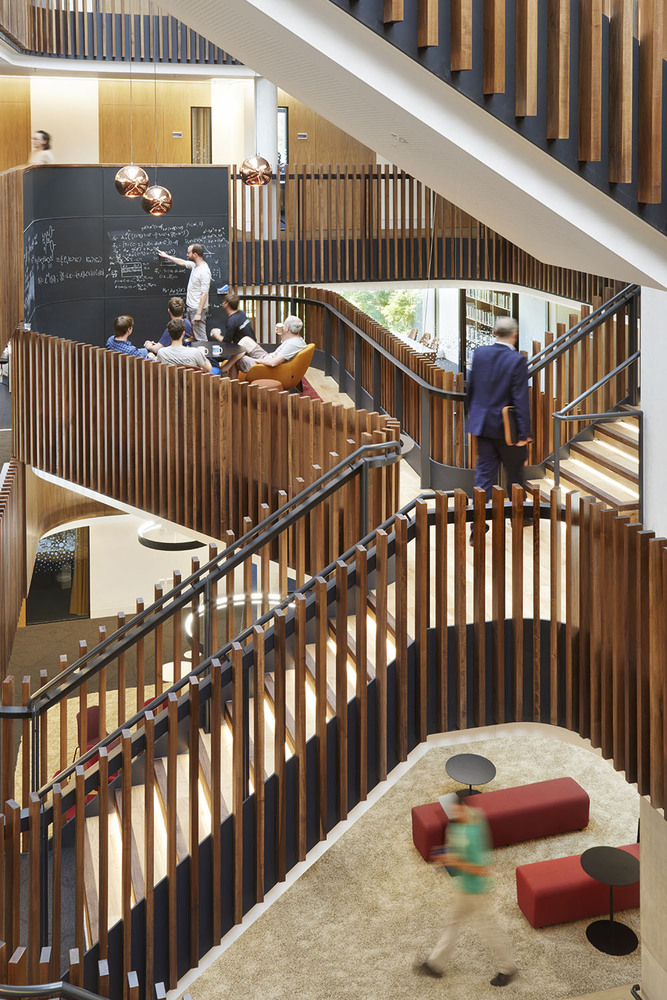
Within the robust basement floors, structurally isolated “black box” laboratories that require onerous standards of vibration isolation have been created. These are housed on top of monolithic concrete keel slabs, the heaviest of which weighs 54 tonnes, and are mounted on sophisticated damping systems to provide a stable platform for nano- scale experiments that are otherwise sensitive enough to be affected by vibration sources that include the M40 Motorway, nine miles to the east.
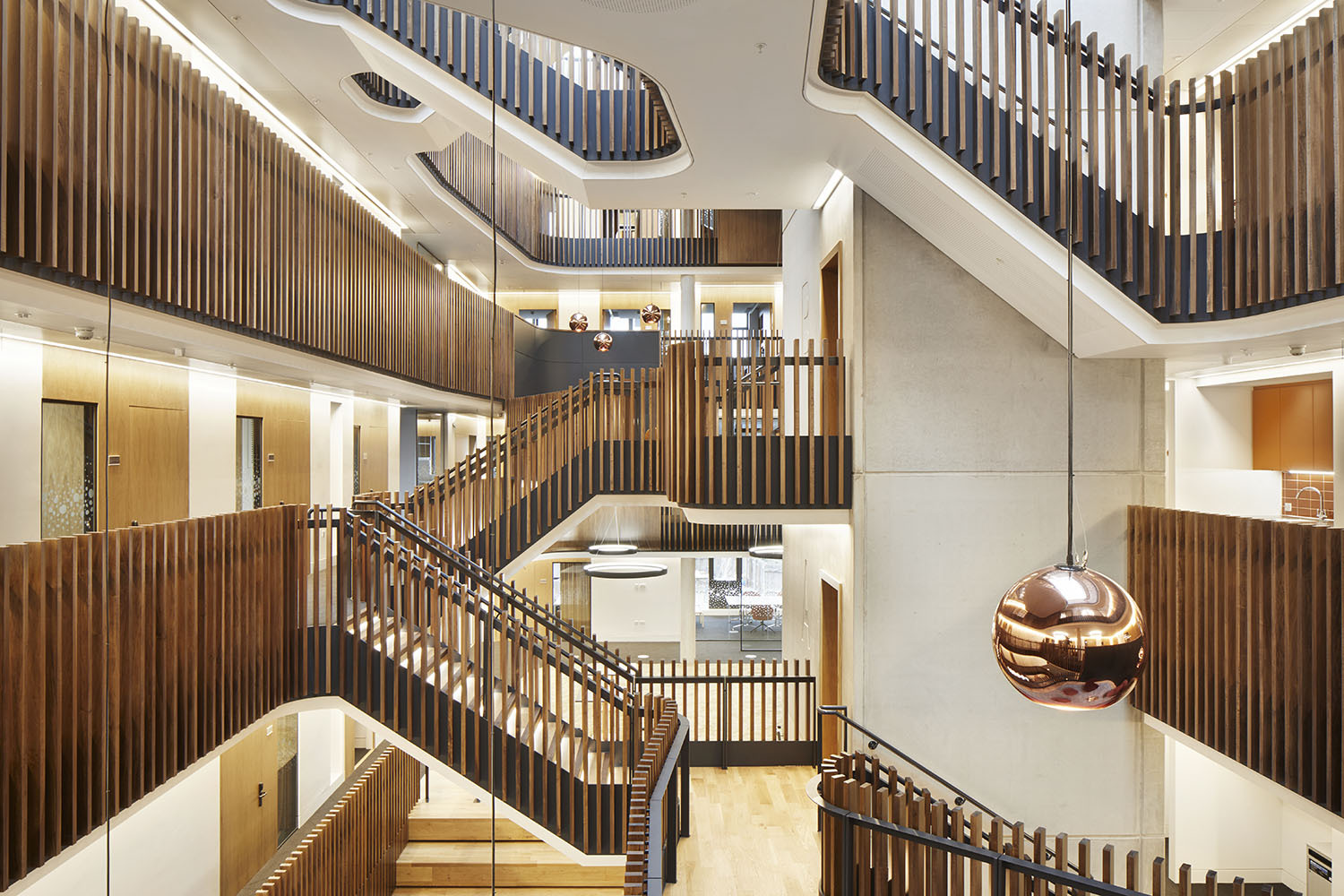
Major plant equipment is housed in a sub-basement with a physical break between the structures to isolate any vibration that may affect experiments.
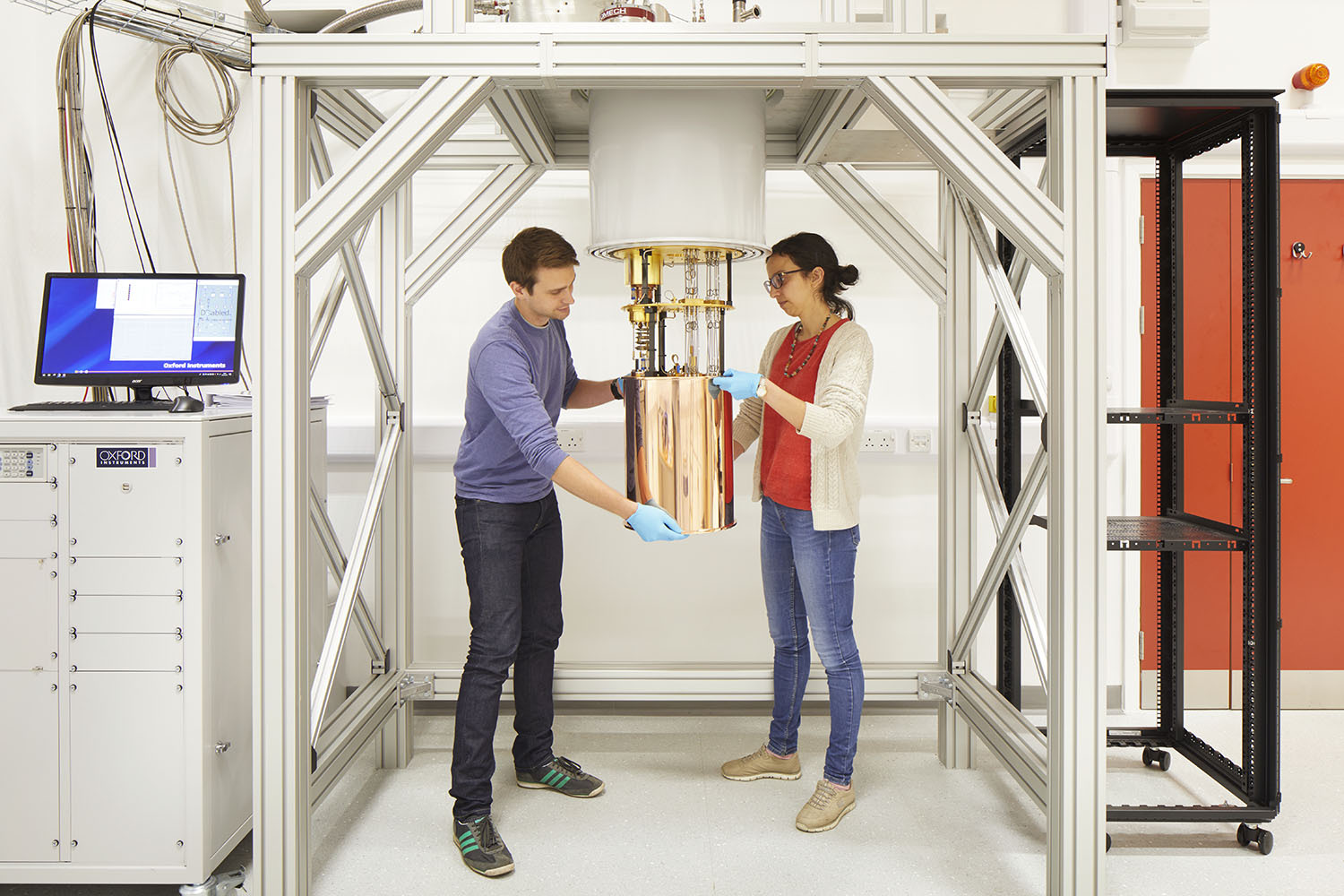
Despite the heavy servicing of the Experimental Physics laboratories, Hawkins\Brown’s building achieved a BREEAM Excellent rating.
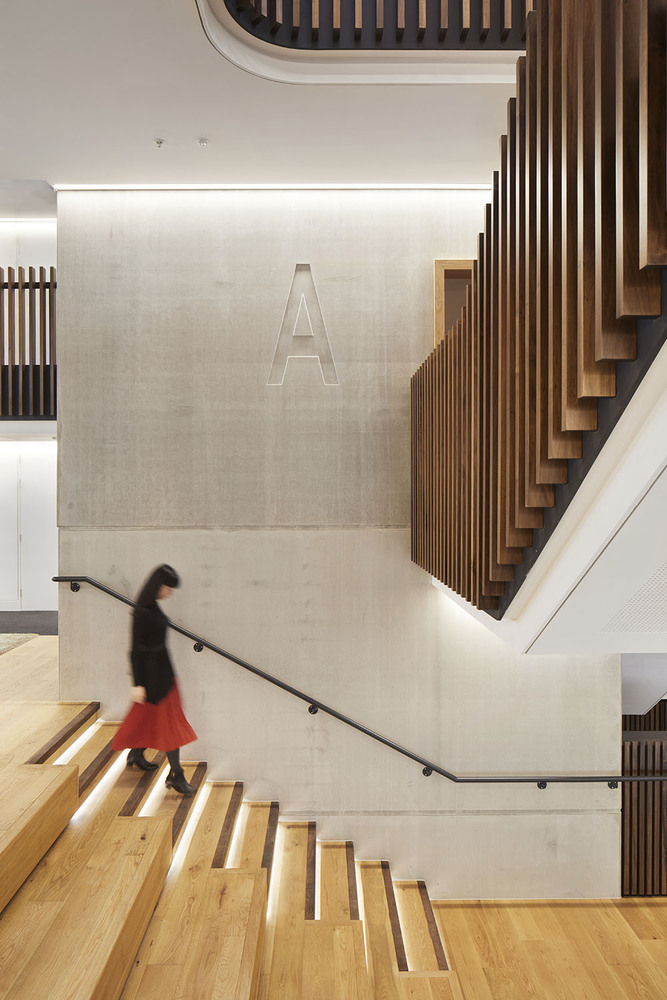
The central atrium, through which rises a series of stairs and landings, provides a focal point for the building and establishes continuity between the two halves. The landings are equipped with blackboards and informal seating and act as stages, facilitating presentations by researchers and encouraging them to test, discuss and develop their ideas together.
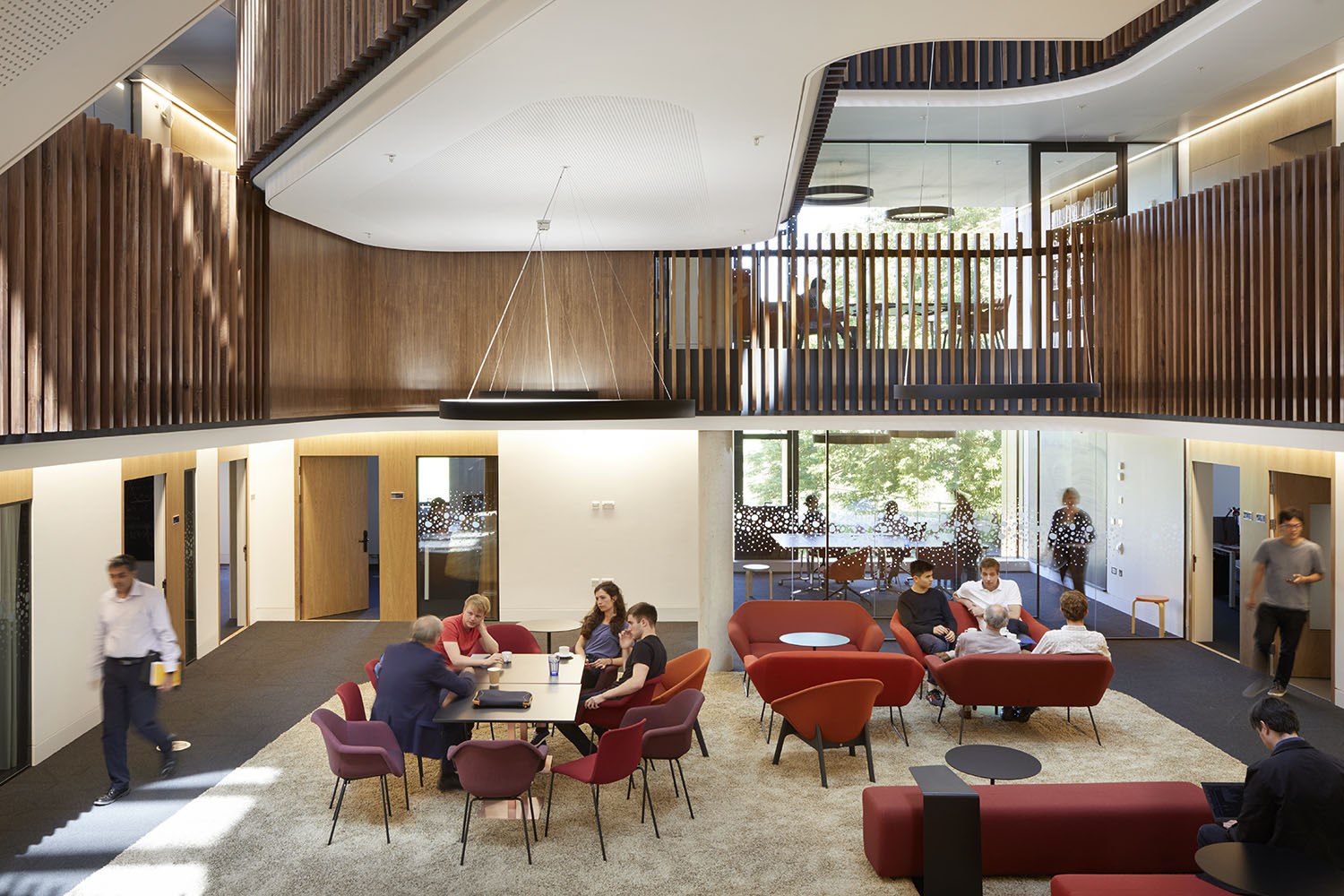
This is supported by strong visual links across the atrium and into individual research offices. This aspect is in line with the university’s vision for the Department to break with the traditional academic working model and learn from industry to transform its working methods.
Photography by Jim Stephenson and Jack Hobhouse
You Might also Like
